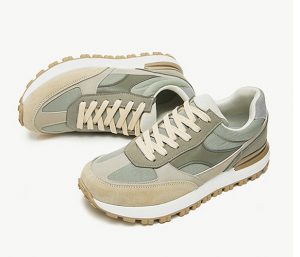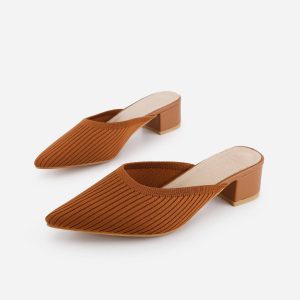We are a footwear maker with 10+ years’ experience,our factory has great advantages in price and product quality. If you are interested in our factory,you can click the our website.https://www.keleeti.com/

Introduction
Shoes are one of the oldest and most commonly used garments in the world. Shoes provide us with comfort, protection, and style. Shoes are made in factories all over the world and the production of shoes is a major industry. This paper will discuss the process of producing shoes in a factory, from the raw materials to the finished product. It will also discuss the advantages and disadvantages of producing shoes in a factory setting.
Raw Materials
Shoe production starts with the raw materials. The most common materials used in shoe production are leather, rubber, fabric, foam, and synthetics. Leather is the most widely used material in shoe production, as it is durable and provides great comfort. Leather is also easy to work with and can be treated to create various colors and textures. Rubber is also widely used, as it is waterproof and provides great traction. Fabric is also used for the upper portion of shoes, as it provides breathability and is lightweight. Foam is used for cushioning and comfort, while synthetic materials are used for waterproofing and insulation.
The Manufacturing Process
Once the raw materials have been obtained, the manufacturing process begins. The first step in the process is cutting the raw materials into the desired shapes and sizes. This is done using specialized machines and cutting tools. The next step is stitching the pieces together. This is done using either hand-stitching or machine-stitching, depending on the design and complexity of the shoe. After the pieces are stitched together, the upper portion of the shoe is attached to the sole. This is done using either glue or stitching.
The next step is attaching the outsoles to the uppers. This is done using either glue or stitching. After the outsoles are attached, the shoes are then inspected for quality. This is done to ensure that the shoes meet the required standards of the company. After the inspection, the shoes are then ready for the final steps of production.
The final steps of production involve finishing the shoes. This includes adding any additional features, such as laces, straps, or buckles. The shoes are then polished and cleaned, and then packaged for shipping.
Advantages and Disadvantages of Producing Shoes in a Factory
Producing shoes in a factory has many advantages. First, the production process is highly efficient and cost-effective. The use of machines and specialized tools allow for mass production of shoes, which helps to keep the costs low. Additionally, the use of machines also helps to ensure that the shoes are of high quality, as the machines are able to produce consistent results.
Despite the advantages, there are also some disadvantages to producing shoes in a factory. First, the production process is highly mechanized and there is little room for creativity or innovation. Additionally, the use of machines also leads to the potential for errors, as machines can make mistakes. Additionally, the use of machines also leads to the potential for injury, as machines can be dangerous if used improperly.
Conclusion
In conclusion, producing shoes in a factory is a highly efficient and cost-effective way to produce shoes. The use of machines and specialized tools allows for mass production of shoes, which helps to keep the costs low. Additionally, the use of machines also helps to ensure that the shoes are of high quality, as the machines are able to produce consistent results. Despite the advantages, there are also some disadvantages to producing shoes in a factory, such as the lack of creativity and potential for errors and injury.





